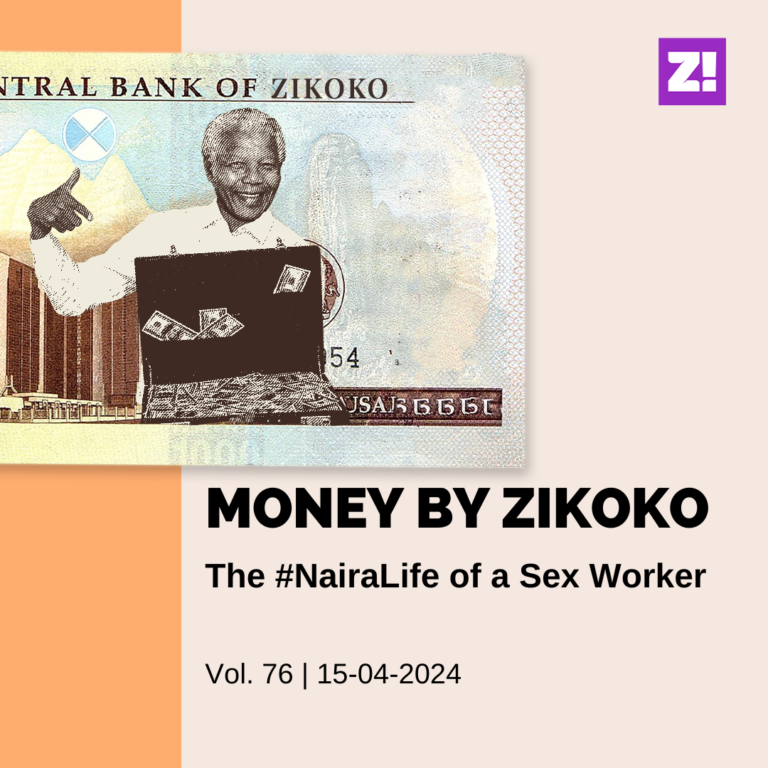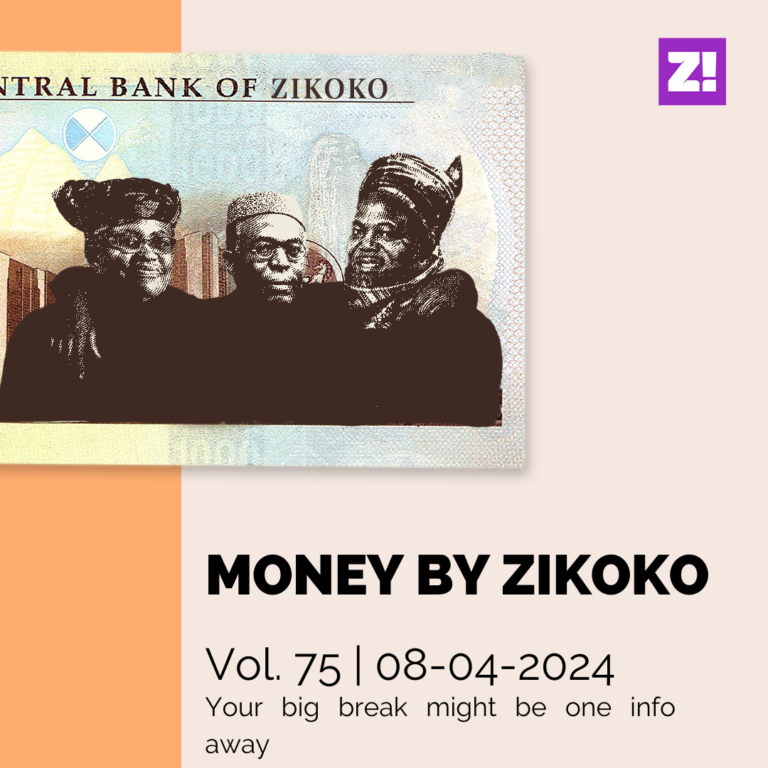Every week, Zikoko will share the hustle stories of Nigerians making it big in and out of the country. With each story, we’ll ask one crucial question in several ways: “How you do am?”
In 2017, Fisayo Fosudo had a lot to look forward to. He’d just spent his life savings — about $5k — on video production equipment. For the then-21-year-old creative, this purchase was the key to unlocking the next stage of his career, transitioning from graphic design to content creation and visual storytelling.
But this decision was years in the making.
About four years earlier, Fisayo was a curious, bright-eyed 17-year-old whose favourite pastime was watching YouTube videos. His interest in these videos propelled him to also start making home videos with his mum’s iPad.
“I was so awestruck by the device, so I tried to use it to create videos. They were just not flattering; the camera wasn’t very good at the time,” Fisayo tells me. “But I remember using the iPad to shoot a drama in church, and everyone loved it.”
Even though he created these early videos for fun, he still had to navigate a familiar struggle every creative deals with at some point: the quality of his output didn’t match his taste.
“I was always watching video content from YouTubers in the US, like Marques Brownlee and Jonathan Morrison. I loved the quality of the content they put out and wanted to create something like those. But I could never manage to do that with an iPad.”
It was also around this time that he noticed a gap in the Nigerian content creation space for the consumer tech videos he liked to watch. According to him, this was a source of discontent, and he’d have given anything to plug this gap.
But the cost of throwing his hat in the ring was steep. First, he had to upskill his video production and content creation game. Also, he needed money to purchase all the gear he needed. As a university student studying for an economics degree, there was no clear way to make either of these happen.
So, he pivoted into something else.
The pivot into graphic design
“I’ve always had an artistic side. For as long as I can remember, I could draw. I used to have a lot of fun drawing comics,” Fisayo says.
In his second year in university, he leaned into this and picked up graphic design. Subsequently, he took design courses, read a ton of books and combined the knowledge into starting a student enterprise. The remainder of his time in uni was spent upskilling and honing his skills. In his final year, he stumbled on freelancing and started working for clients from all over the world.
His work as a graphic designer led him to his first job straight out of university in 2015.
“I met this guy at an event — his name is Ayo. He saw some of my work and loved the quality. One thing led to another, and he introduced me to the Max.ng founders, who hired me as a social media strategist. That’s how I got my first job.”
At Max.ng, Fisayo wore many hats. While his primary role was in the design department, there was also an opportunity to work in video, and he gladly took it. His fascination with video creators aside, he thought learning the basics of video production would make him a more-rounded creative. So he used all tools available to gain as much practical knowledge as he could.
“There was a camera in the office, and I’d always play around with it and used it to create stuff. It helped me learn and master video production.”
Max.ng was his day job. But Fisayo spent a lot of his nights working on freelance graphic design projects. With the income from these side projects, he saved up $5k and bought his first set of production gear in 2017.
Starting a YouTube channel and betting on himself
As a voracious consumer of video content, Fisayo realised the huge visibility potential he could unlock with Youtube, which informed his decision to open a Youtube channel after purchasing his gear in 2017.
“Google is the biggest search engine. YouTube is the second. Both are owned by the same company. So when you use Google search, chances are a YouTube link would pop up,” he explains. “It was a no-brainer that YouTube was the way to go.”

Much like the creators he’d been following for years, Fisayo wanted to create consumer tech content — a very niche offering in Nigeria. But this came with a big question: “Would people watch a Nigerian creator when there were bigger acts like Marques Brownlee creating similar content?”
While he didn’t have a definitive answer to this — it’s hard to predict audience behaviour — he trusted that his videos would fight for their share of attention because of their use case.
“My thinking was that Nigerians had questions about devices and gadgets, and I wanted to be the person answering those questions.”
On the more practical side of things, Fisayo figured it might also be a smart play if he focused on the moderately-priced mid-range devices targeted at Nigerians.
“The big guys were covering the big phones. So I thought my videos should be more about brands like Tecno, Infinix, Xiaomi and Oppo. When I realised this, I was more confident about finding product-market-fit.”
With the early kinks ironed out, he jumped into his new endeavour. And at first, it was something he did during the weekends because of the demands of his work at Max.ng. In November 2017, he went full throttle on YouTube. He was taking a page from the popular investment advice: when you have conviction[about an opportunity], bet big.
Growth can be slow and painful
Perhaps the first lesson Fisayo learnt was that building from the ground up is lonely and incredibly hard. Out of a job and a regular stream of income, he needed to make it work. But there was no eureka moment or anything that pointed to growth.
“The first six months were hard,” he says. “Nothing actually happened. Nobody was calling me to review their products, and I wasn’t making anything off the videos I put out. Yet I was putting money into it because I had to buy and use the products before I reviewed them.
“Luckily, I was living with my parents at the time, and my bedroom was my studio space. It gave me the time I needed to figure things out.”
The first semblance of a win came later in 2017, following a brand partnership. On a whim, Fisayo reached out to the Head of Partnerships at Tecno, requesting a phone to review.
“They didn’t even know I was in Nigeria because of the quality of the videos I’d put out. They were sold and sent me a Camon CX that was launching at the time. I did the video. It got over 20k views. I followed this up with a review of the Camon CM, which made the trending bar in two countries. I was stunned.”
He’d soon have more reasons to celebrate. The next phone he reviewed was a Samsung, also sent to him by the makers. The success of both videos was a massive booster.
When I asked him if there was anything he did differently to land the partnerships, his answer was simple.
“I tried my hardest to make high-quality videos that were beautiful to watch. And I did it consistently. Although it was a challenge to stay consistent when it was hard and money wasn’t coming in.”
One thing he’d have loved to control was his channel growth. The subscribers came in trickles.
“When I made the Tecno video, I was at 3000 subscribers. As I put out more content, the numbers grew. On average, I was getting about 1000 new subscribers a month.”
The interesting thing about numbers is how they add up. The channel hit 100,000 subscribers in 2021, four years after its launch. About two years later, the number has increased by over 300%.
On monetisation
Naturally, the conversation about channel growth and numbers led to another important aspect of the creator journey — monetisation.
Nobody invests $5k into anything without hoping to get something more out of it. But Fisayo anticipated that it might not be possible to monetise his channel and content immediately.
“I expected the grind to be slow. So I didn’t put my mind to it like that.”
It took about eight months before Fisayo landed the first paid brand partnership. Soon after, he was eligible for the YouTube Partner Program — the platform’s ad revenue and monetisation program for creators.
To make money directly from YouTube, something called “Cost per mille” comes into play. It means how much advertisers want to pay for every 1000 views their ads get on a piece of content. Factors like location and content type affect how much a creator makes from this program.
“The cost per mille in Nigeria is typically between $1 and $5. The more the channel grew, the more people watched the content and the earnings from YouTube increased. That said, the channel makes more money from working with brands.”
About six years into this, a lot hasn’t changed in Fisayo’s monetisation model.
“Our two major sources of revenue are ad revenue and partnerships with brands. There are a couple other things that happen on the side, but these are the recurring ones.”
Developing more content buckets
Between 2017 and 2020, Fisayo made exclusively tech content. In 2020, a personal experience inspired him to branch into more subject matters.
“I realised I hadn’t been saving money. So I decided to save 70% of my income for a year. I also read a ton of finance content while at it.”
At the end of this experiment, he had a strong desire to make finance content, breaking down financial concepts and trends. He had an economics degree he hadn’t had much use for, anyway. Combining all his strengths, he created a series called Finance Friday.
“It was an instant hit. The channel reached more people and grew more rapidly. Now, half of the subscribers are there for the tech content, and the other half are there for the finance content.
According to Fisayo, his biggest takeaway from this is how creators can evolve and add more value to their offerings. Since then, he’s launched another series — Leaderboard — and is currently working on shipping more.
The marathon continues
As our conversation drew to a close, I asked Fisayo what he thinks has consistently contributed to his growth and success over the years, and what other creators can learn from it.
“Thinking about the audience does a lot of good. The audience wants quality video and audio. They also want solid and useful information. If your content is not beneficial to them, you lose them.”
This underlying principle guides his content creation process, which he optimises to be as rigorous as possible, with research as the backbone.
“Between using and understanding the product, researching, scripting, shooting and editing, we spend about five weeks working on the tech reviews before they’re ready to go out. The finance videos take between three days to one month, depending on the complexity and level of research we need to do. I want to create value for the audience, and that’s what really matters,” he explains.
About six years, thousands of dollars in revenue and over 400,000 YouTube subscribers later, Fisayo is looking forward to unlocking the next level in his career.
“I want to improve what I know and how I share knowledge. My plan for the next few years is to continue figuring out how to improve the quality of the content I put out. That’s the job.”
Hustleprint stories drop every two weeks on Tuesdays at 12 p.m. WAT, and Hustleprint guides will drop in the interim weeks.
So you can follow each drop, Hustleprint will be published in our money newsletter.
What do you think of our website’s new look? It’ll only take a minute to fill this form and let us know.




